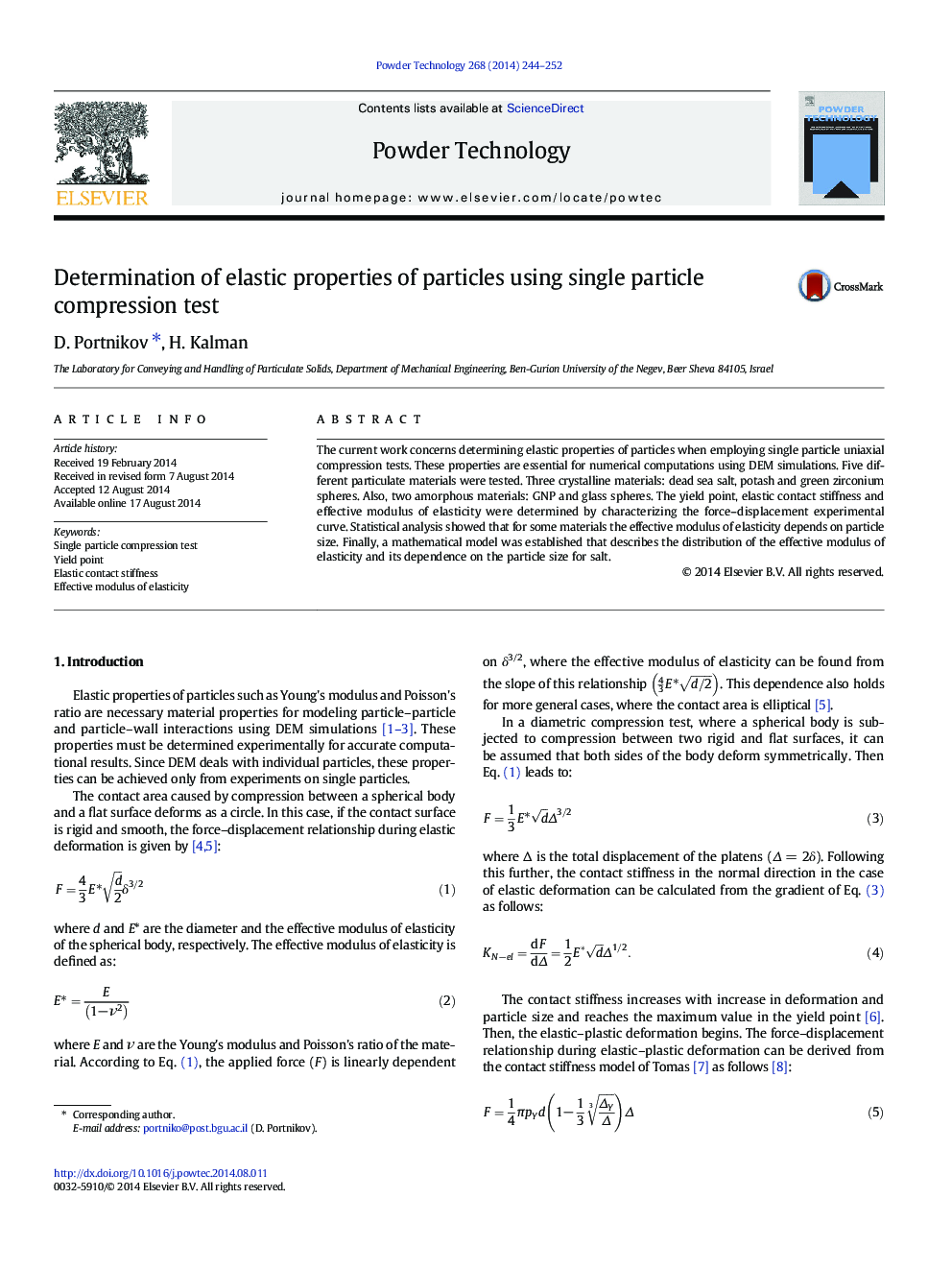| Article ID | Journal | Published Year | Pages | File Type |
|---|---|---|---|---|
| 235954 | Powder Technology | 2014 | 9 Pages |
•Single particle compression test was performed with five different materials.•An additional method of determining the yield point was suggested.•Determined effective Young's modulus was represented by a statistical distribution.•For some materials the effective Young's modulus depends on particle size.•A model which represents the distribution of the Young's modulus was established.
The current work concerns determining elastic properties of particles when employing single particle uniaxial compression tests. These properties are essential for numerical computations using DEM simulations. Five different particulate materials were tested. Three crystalline materials: dead sea salt, potash and green zirconium spheres. Also, two amorphous materials: GNP and glass spheres. The yield point, elastic contact stiffness and effective modulus of elasticity were determined by characterizing the force–displacement experimental curve. Statistical analysis showed that for some materials the effective modulus of elasticity depends on particle size. Finally, a mathematical model was established that describes the distribution of the effective modulus of elasticity and its dependence on the particle size for salt.
Graphical abstractFigure optionsDownload full-size imageDownload as PowerPoint slide
